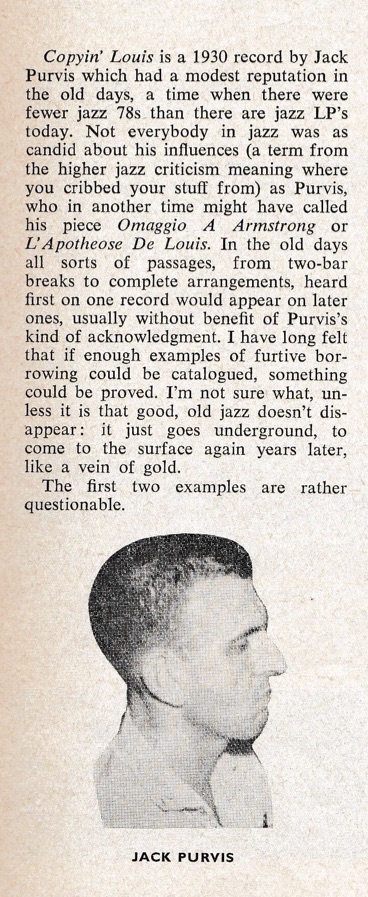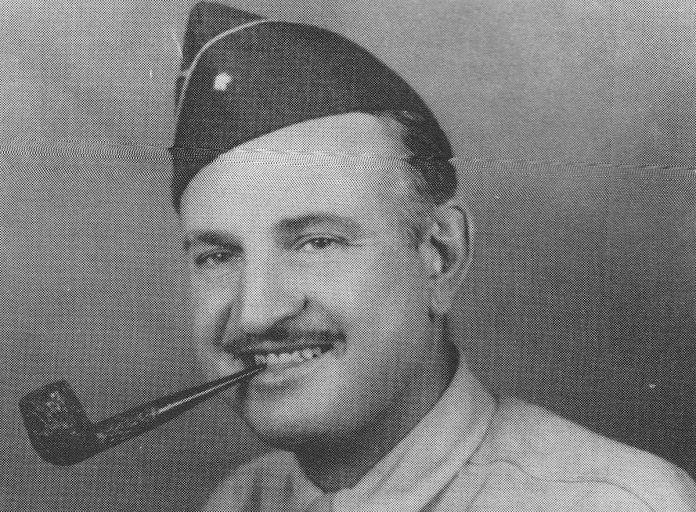Jack Purvis was a remarkably gifted musician who led an astonishing life. Unfortunately, trying to trace his life is like stumbling blindfold through a minefield. Purvis’s life was so extraordinary that if it were to be boiled down to a pitch for a biopic, any self-respecting film studio would turn it down because audiences wouldn’t accept it as a true story. Even his own claims were often misleading, appearing to be wildly imaginative, and sometimes they were. To make matters worse, often the wildest were true. Well, maybe. It is therefore possible to write pretty nearly anything and no one can offer much in the way of contradiction. What follows contains facts, fiction, speculation – as to which is which, well that’s anybody’s guess.
John Purvis was born in Kokomo, Indiana, 11 December 1906, to comfortably middle-class but domestically troubled parents and the death of his mother not long before his sixth birthday was a damaging blow. He began stealing and was sent to reform school where he discovered music and learned to play trombone and trumpet. He mostly played the latter instrument but during his career he would occasionally be heard on trombone as well as piano and even, reportedly, harp.
After reform school, and now in regular school, he played trumpet professionally and an early job was with Hal Denman’s dance band. Other dance-band work after finishing school included playing with the Original Kentucky Night Hawks and Whitey Kaufman’s Original Pennsylvanians. In 1927, he married and was soon a father; his daughter, Betty Lou, became a radio DJ and also wrote for Downbeat magazine. So far so good, and verifiable, notably as seen in The Many Lives Of Jack Purvis by George A. Borgman & Eric B. Borgman.
Jack Purvis learned to fly, something that would open up highly questionable fields of activity for him in the future. In 1928 he joined George Carhart’s band and went to France. There, he appears to have been involved in illegal activities (petty theft) and had to leave the country in haste.
The following year, Purvis’s musical skill brought him to wider attention when he joined the very popular band led by Hal Kemp. He also began recording and over the next couple of years appeared not only with Kemp but also with Smith Ballew, Rube Bloom, the California Ramblers, and he recorded under his own name, backed by the Hal Kemp rhythm section. Resulting from this session were two sides: Mental Strain At Dawn and Copyin’ Louis.
That last title is significant because Purvis was hugely influenced by Louis Armstrong. Of course, he was far from alone in this; any trumpet player of the time with any interest in playing jazz was guided by the dramatic effect Armstrong was having on the world of music. Records made by Purvis clearly demonstrate the Armstrong-effect, but in his case it is striking how very good he was and that despite the title of that particular recording, Purvis brought his own distinctive ideas to his work.
Among other recording sessions of this period is one on which he led an integrated band with J.C. Higginbotham. Around this time he left Kemp for the California Ramblers and he also played with the Dorsey Brothers, with Fred Waring and Charlie Barnet; he also appears to have played as featured trumpet soloist with The New Orleans Symphony Orchestra. Accounts from the time suggest that Purvis was a highly skilled musician, could sight read the most difficult arrangements and, as is apparent from his records, he was also a gifted and inventive jazz soloist. All this said, it is also extensively reported that Purvis was unreliable and subject to acute depression.

He appears to have used his ability to pilot aircraft to work at this in Texas, with rumours that he flew in and out of Mexico as a smuggler. A move to California added to his already broad range of abilities; he worked on radio and in film studios as an arranger, composed a work in classical form, Legends Of Haiti, and, as if this were not already enough, he also worked as a chef in San Francisco.
Not long after this, he went to New York where he joined another name band, that led by Frankie Froeba, making more records in 1935. He was then briefly with Joe Haymes but then dropped out of sight. There has been speculation of what he was doing at this time, but the next verifiable activity was again illegal; this came in mid-1937 when he was arrested in Texas on robbery charges and ended up doing time in the state pen at Huntsville. While there, music was a saving grace; he led and played piano with a prison band, the Rhythmic Swingsters, which broadcast on WBAP radio. Released on parole in 1940, Purvis promptly broke the conditions and was sent back to prison where he remained until late in 1946.
His life from this point on is mostly rumoured; he played in some bands, he played on street corners as a busker, he again worked as a chef, a carpenter, a radio repair man, and he flew in Florida. Also among these largely unverifiable reports is one suggesting that somewhere along the way he was a mercenary in South America. He might also have been a bigamist.
Even in death, in San Francisco, 30 March 1962, Jack Purvis confounded those who like everything neatly cut-and-dried and verified. His death certificate states the cause as “fatty degeneration of the liver” but extensive research by Paul Larsen suggests that he committed suicide by gassing himself. As if this were not enough, insistent, if barely credible, rumours suggested that he was still alive six years later, when he reportedly met and talked with cornet player Jim Goodwin.
All of the foregoing apart, Purvis the jazzman was an interesting, effective and sometimes exciting player. Much of his recorded legacy can be heard on a three-CD boxed set, Jack Purvis 1928-1935 (Jazz Oracle BDW 8035). On the 70 sides assembled here, Purvis is heard on the recording sessions mentioned above, as well as others with the Boswell Sisters, Seger Ellis, Nick Lucas, Lee Morse, Lloyd Newton, Dick Robertson, and Adrian Rollini.
However profligate and undisciplined he might have been in life, on record Jack Purvis was a man of musical substance and this album, with its many hot solos by a noteworthy if largely forgotten trumpeter, is an excellent way in which to live, however vicariously, a little on the wild side of jazz.



